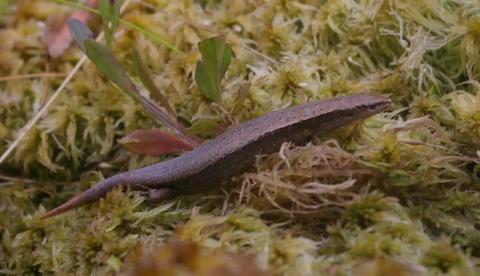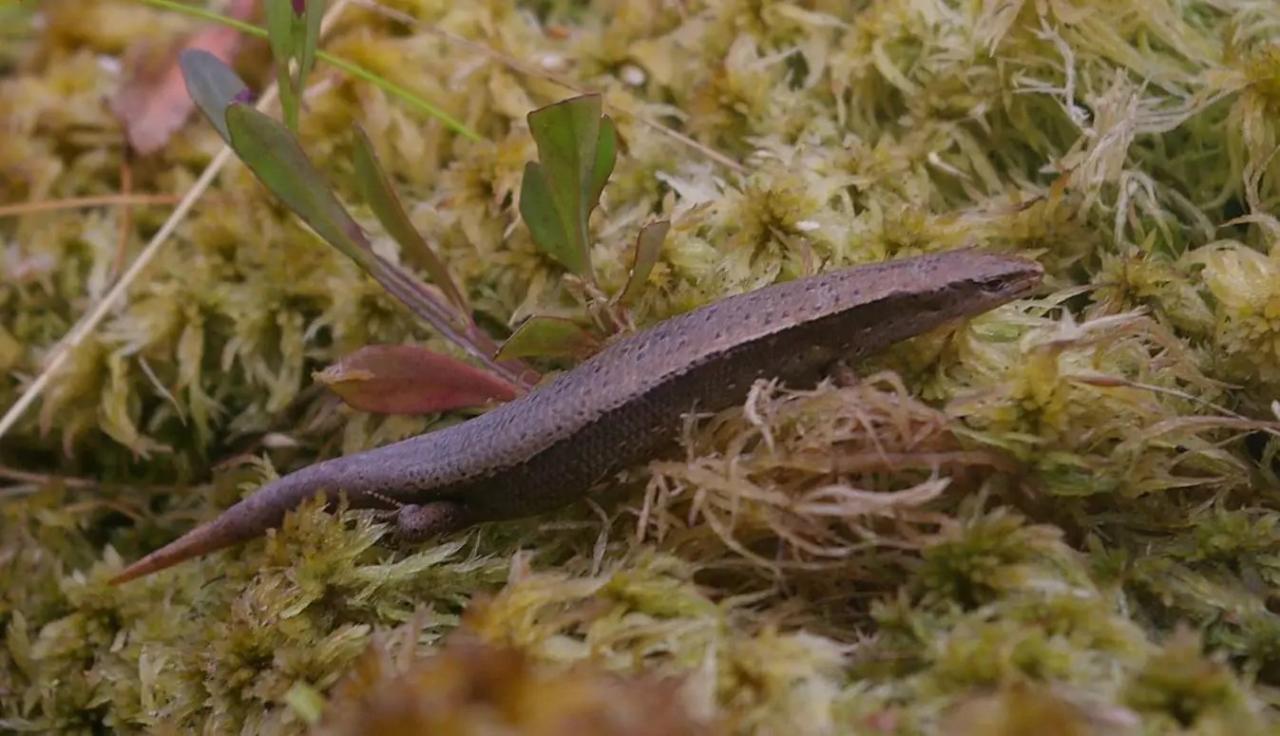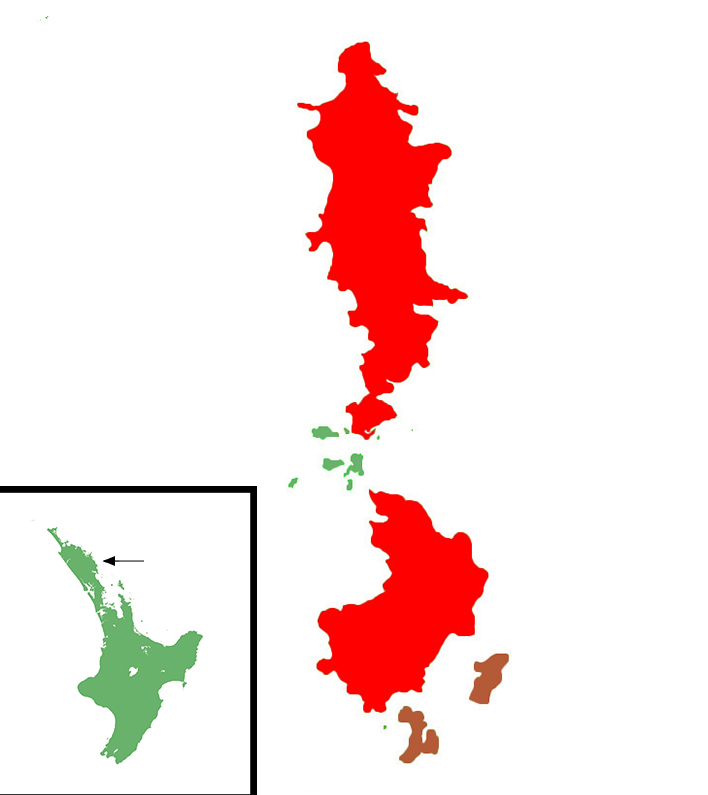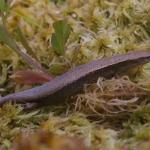- Home
- Herpetofauna Index
- Native
- Oligosoma Hardyi
Oligosoma hardyi
Hardy's skink
Oligosoma hardyi
(Chapple et al., 2008)

Length: SVL up to 62mm, with the tail being equal to or slightly longer than the body length
Weight: 5.1 grams
Description
The smallest of the three skinks species restricted to the Poor Knights Islands. It is visually similar to the copper skink (Oligosoma aeneum) from the North Island, but due to its isolation has developed several features that allow it to be distinguished. This species is golden-brown in colouration with white speckling. In addition, a copper dorsolateral stripe bordered underneath by dark brown is present from the neck to the base of the tail. The lower surfaces are typically cream, with flashes of yellow or orange towards the vent, black flecking may be present.
Geographically isolated from the copper skink (Oligosoma aeneum). Can be distinguished from the co-occurring Aorangi skink (Oligosoma roimata) and Marbled skink (Oligosoma oliveri) by the lack of a black-edged teardrop marking under the eye.
Life Expectancy
Largely unknown, but as with most of Aotearoa's small endemic skinks it is likely that their life expectancy is around 10-20 years in the wild.
Distribution
Confined to the two largest islands in the Poor Knights group (Aorangi, and Tawhiti Rahi).
Ecology and Habitat
A poorly known species, being either crepuscular or cathemeral. It occurs in a broad range of habitats on the Poor Knights islands, including, coastal forests, and flaxlands. As with other skinks, they may occupy seabird burrows, invertebrate burrows, or dig their own.
Social Structure
Hardy's skink is solitary in nature, but may be found in small to large groups under suitably large refugia.
Breeding Biology
Likely to be viviparous. Reproductive biology unknown.
Diet
As with other native skinks, this species is likely to be omnivorous feeding on invertebrates and small fruits.
Disease
The diseases and parasites of Aotearoa's reptile fauna have been left largely undocumented, and as such, it is hard to give a clear determination of the full spectrum of these for many species.
Hardy's skink, as with many of our other Oligosoma species, is likely to be a host for at least one species of endoparasitic nematodes in the Skrjabinodon genus (Skrjabinodon poicilandri), as well as at least one strain of Salmonella. Similarly, as with most ex-Cyclodina skinks they are unlikely to harbour large numbers of ectoparasitic mites in the wild.
Conservation strategy
Listed in the most recent threat classification as 'At Risk - Naturally Uncommon', due to them being point endemic to the pest-free Poor Knights Islands. Although, effectively safe from the threats that many of our reptile fauna face due to their entire range occupying pest-free offshore islands, they are reliant on the continued pest-control efforts undertaken by DOC to keep their habitat free of unwanted threats.
Interesting notes
The specific name 'hardyi' references Graham Hardy, a taxonomist, who was instrumental in describing and untangling the relationships of several of our skink species in his 1977 paper (Hardy, G. S. (1977). The New Zealand Scincidae (Reptilia: Lacertilia); a taxonomic and zoogeographic study. New Zealand journal of zoology, 4(3), 221-325.).
The Hardy's skink, along with its sister taxa (the slight skink) sit within clade 3 (the copper skink complex) of the Oligosoma genus, with the copper skink being their closest relative within the group.
References
van Winkel, D., Baling, M., & Hitchmough, R. (2018). Reptiles and Amphibians of New Zealand: A Field Guide. Auckland University Press, pp376.
Whitaker, A. H. (1968). The lizards of the Poor Knights Islands, New Zealand. New Zealand journal of science, 11, 623-651.

Hardy's skink (Aorangi Island, Poor Knights). © Colin Miskelly: Sourced from Te Papa Blogs


